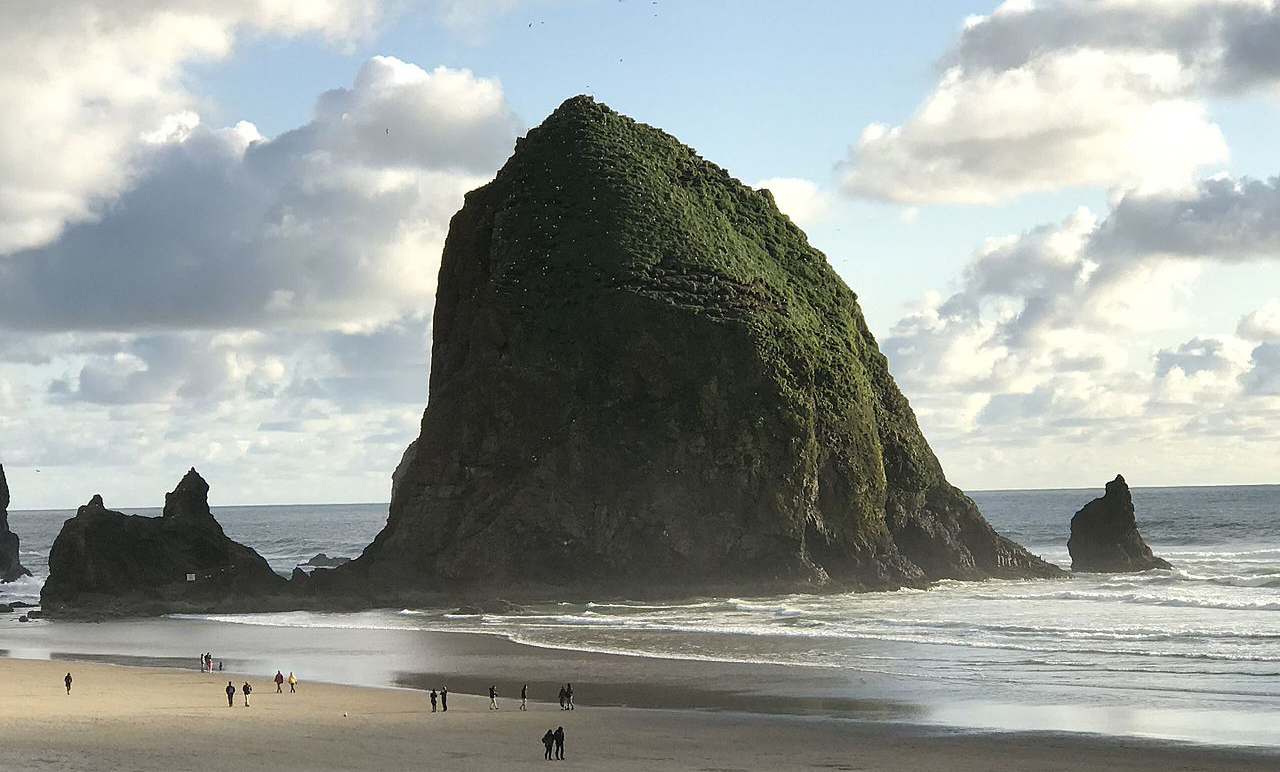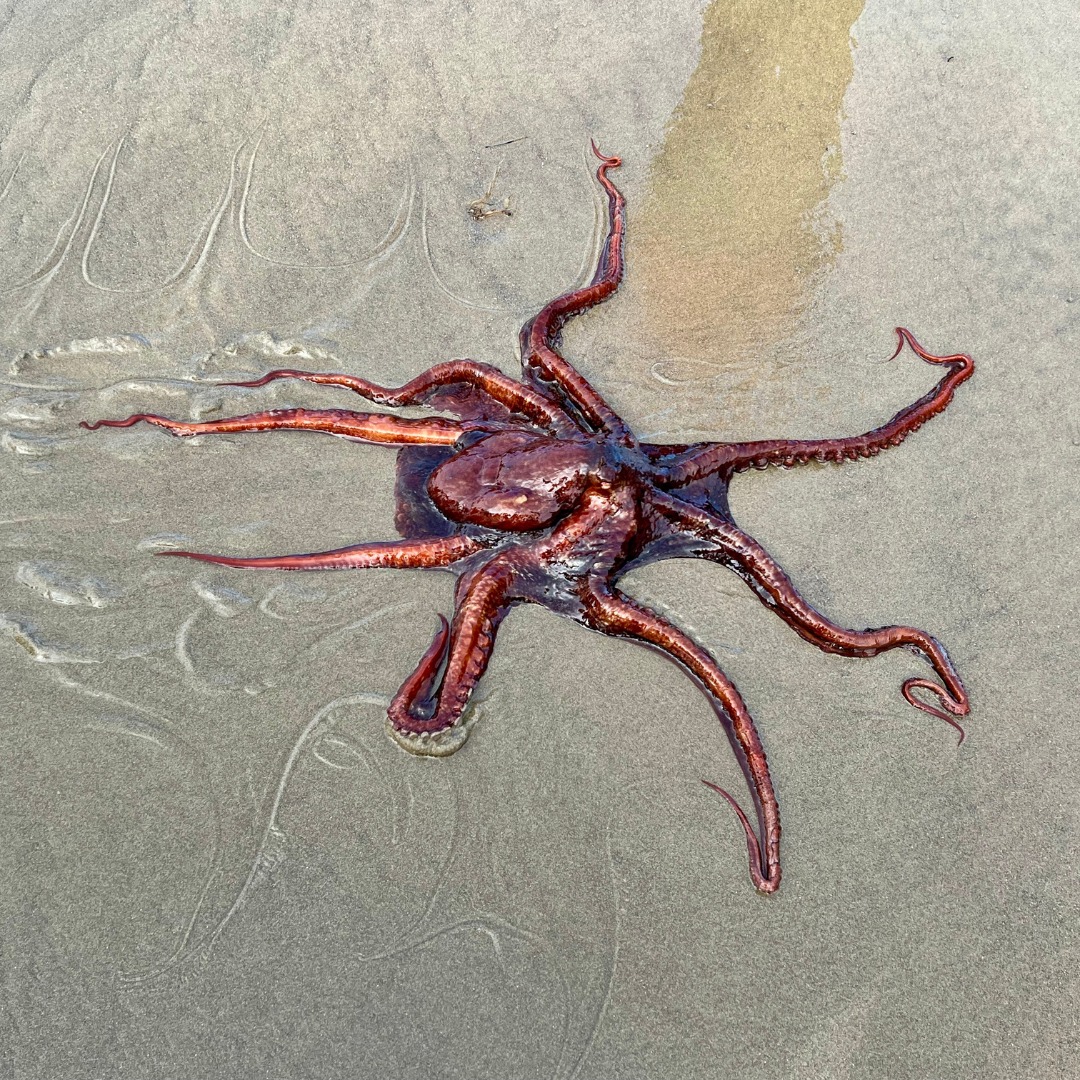


They spotted the beached giant octopus between two rock formations along the Oregon Coast on June 7.
Floundering in the receding tide, the rust-red cephalopod lay with legs splayed out helplessly in the sand between Haystack Rock and the Needles—another famous coastal formation.
It was still morning and the visitor promptly alerted a Rocky Shore interpreter. This still-writhing octopus was alive, though it would need a good coaxing to reach the safety of deeper pools.
The tidepools near Haystack Rock are a biodiversity hotspot. Besides giant octopuses such as this, the habitat is home to nesting birds, such as tufted puffins, common murres, and black oystercatchers. There are also marine mammals such as sea lions and seals.
It also happens to be where the 1985 pirate treasure adventure “The Goonies” was filmed.
Jolene Magee, of the Haystack Rock Awareness Program (HRAP), was the first help to arrive. She saw the waves tugging the stranded octopus further aground to its peril.
The sighting was a rare one, for giant octopuses tend to hang out inconspicuously in tight crevices throughout the pools, usually going unseen. They can also activate pigment in their bodies to change their skin color, serving as camouflage.
“We have only encountered a handful since the start of our program,” Mylasia Miklas, of HRAP, told The Epoch Times. “Sometimes you can find the carcasses of giant Pacific octopuses washed up on shore.”
Ms. Magee immediately alerted shift supervisor Lisa Habecker. When Ms. Habecker arrived, they assessed the best way to help the stranded cephalopod.
They began working together; as Ms. Magee improvised, using a plastic sandwich board to block the octopus from being pushed further ashore, Ms. Habecker nudged the boneless sea critter toward deeper waters.
Their efforts were fruitful. And it didn’t take long before the giant octopus reached safety, though it might not have survived had they not helped.
It promptly propelled itself off, presumably to find some wet nook to hide away in.
“A giant Pacific octopus is a unique find, so our staff members were thrilled to catch a glimpse of this beautiful animal,” said Ms. Miklas, who went on to advise how the public should respond to similar encounters.
“If you ever come across stranded or injured wildlife, please contact your local wildlife authority for guidance.”
She also shared a few interesting tidbits about Pacific giant octopuses:
The life of a giant octopus isn’t long, she added. Only about three to five years, though that’s quite long for an octopus. When they reach the end of their lives, the male seeks out a mate. Once they reproduce, he dies shortly after. The female then finds a rocky den to lay her eggs and will guard them until they hatch. Once they hatch, the female follows the male.
Share your stories with us at emg.inspired@epochtimes.com, and continue to get your daily dose of inspiration by signing up for the Inspired newsletter at TheEpochTimes.com/newsletter




